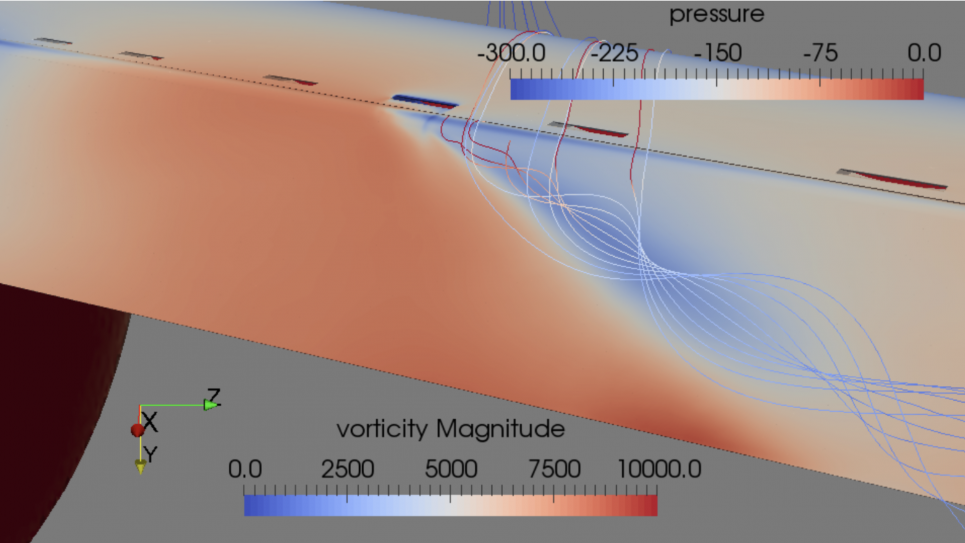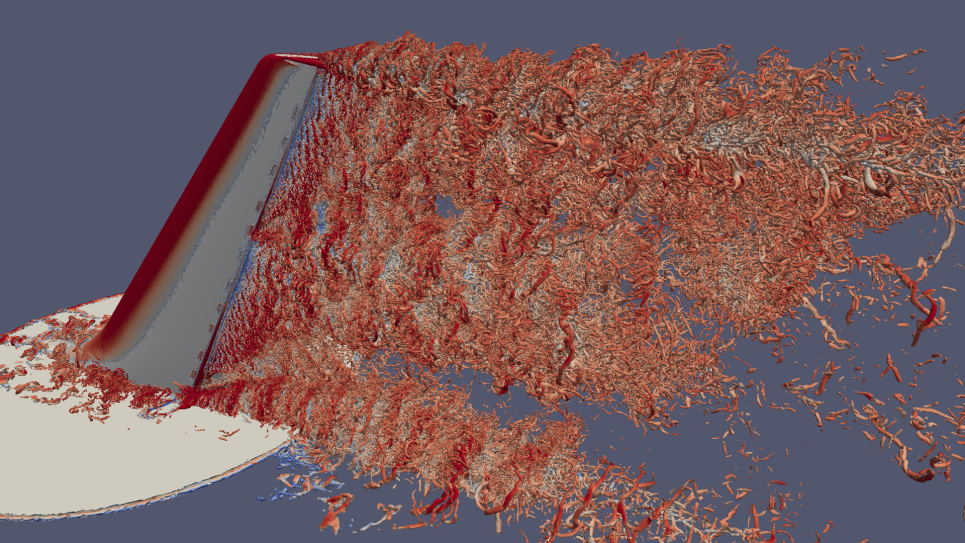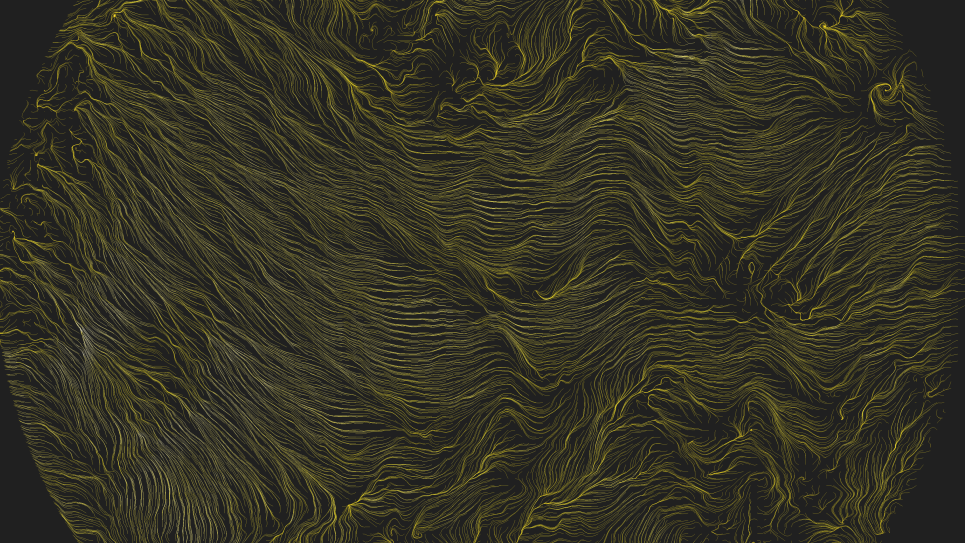
Time-averaged pressure is shown on a deflected rudder of a vertical tail in the area surrounding a single active jet. Time-averaged streamlines colored by vorticity magnitude are also shown. Together, this demonstrates the low pressure region created outboardof a single active jet by a large, oblique vortical structure that extends from the active jet downstream, outboard, and thus across the pathsof other jets (inactive in this case).

